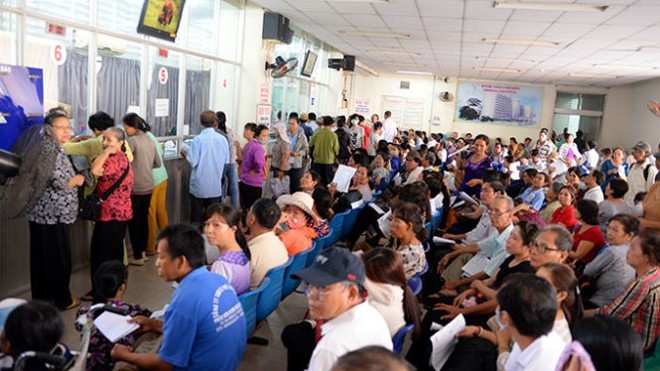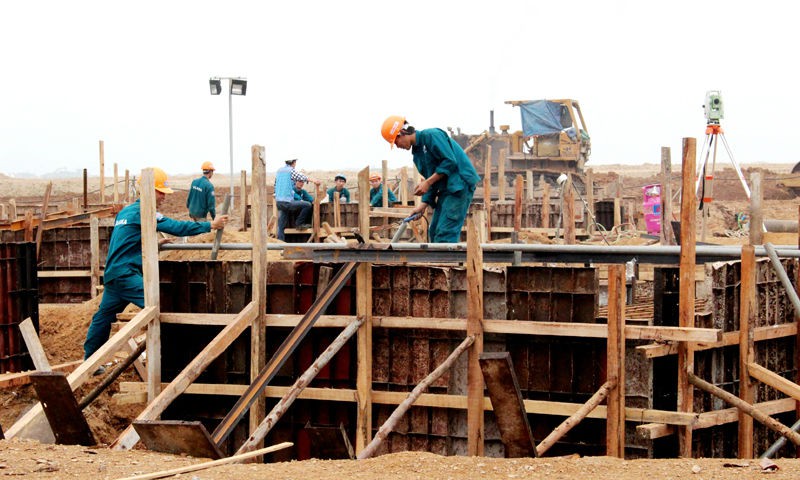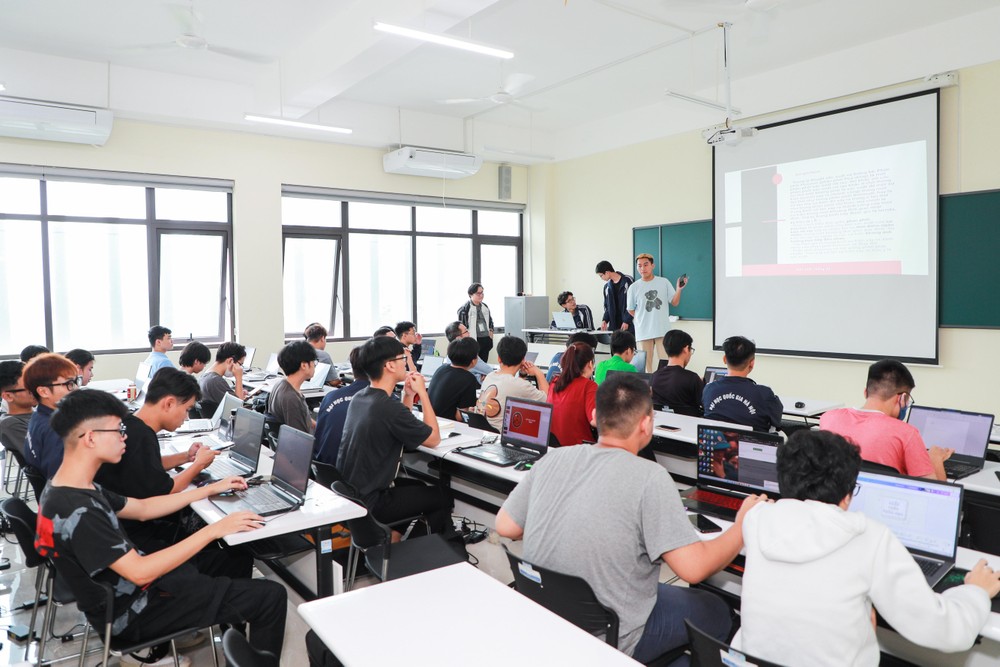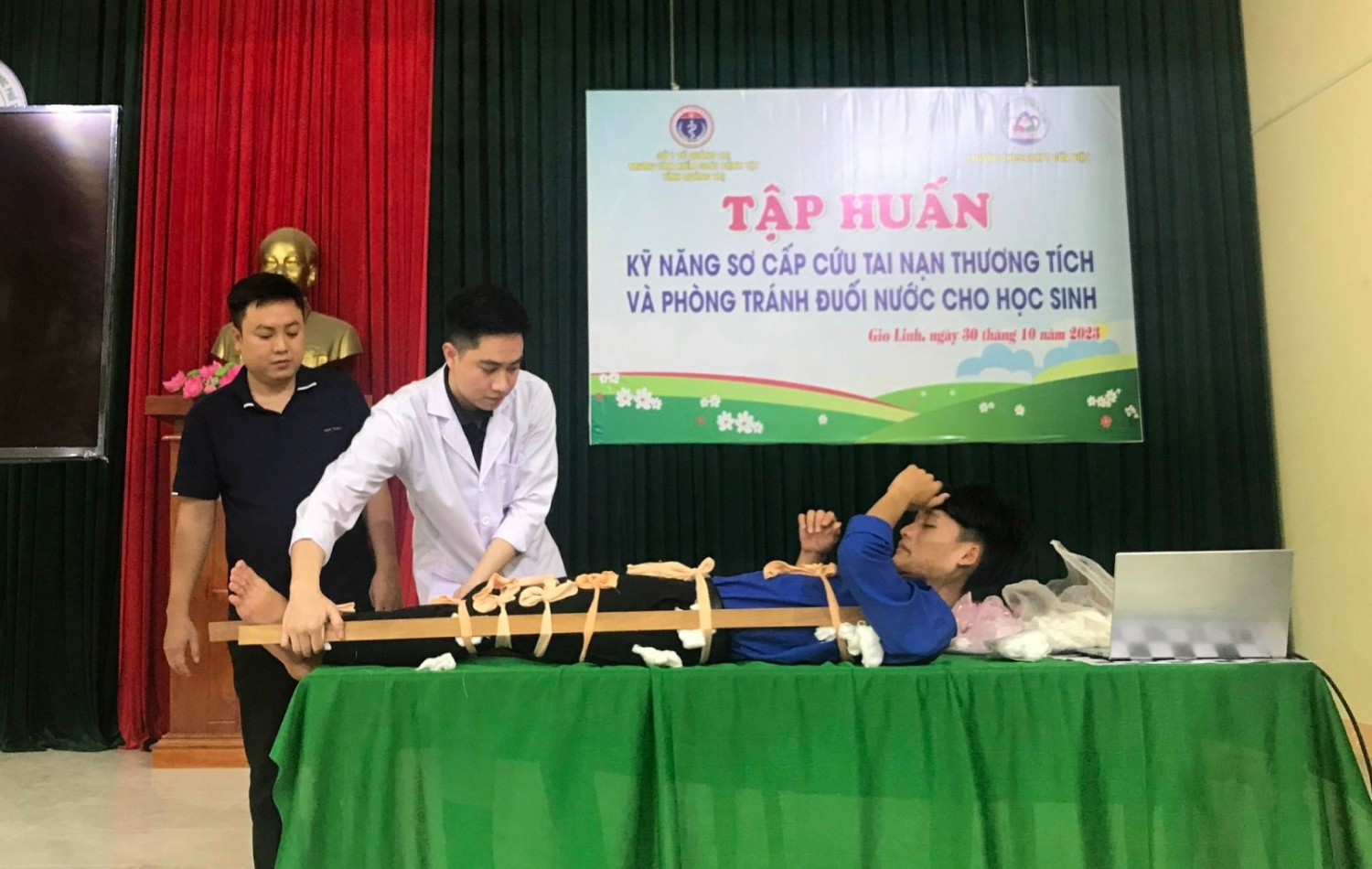Newest conditions for appointing managerial public employees in Vietnam
The content of the article provide details of the conditions for appointing managerial public employees in Vietnam in accordance with current legal regulations.

Newest conditions for appointing managerial public employees in Vietnam (Internet image)
1. Newest conditions for appointing managerial public employees in Vietnam
According to Article 44 of Decree 115/2020/ND-CP (amended by Clause 24, Article 1 of Decree 85/2023/ND-CP), the conditions for appointing managerial public employees in Vietnam are as follows:
- Ensure general standards as prescribed by the Communist Party, law, and specific standards of the appointed position as stipulated by the competent authority.
- For on-site personnel, they must be planned for the appointed position or an equivalent position or higher. For personnel from other sources, they must be planned for an equivalent position or higher. Special cases are considered and decided by the competent authority.
For newly established units that have not yet carried out planning approval, the competent authority will consider and decide.
- Must have held the current position or an equivalent position for a minimum of 02 years (24 months), if not continuous, it can be accumulated (only accumulated for the period holding an equivalent position), except for first-time appointments. Special cases are considered and decided by the competent authority.
- Have a verified personal dossier and resume, including a declaration of assets and income as prescribed.
- Conditions regarding the age of appointment:
+ Public employees proposed for the first-time appointment to a managerial position or proposed for appointment to a higher managerial position must be of an age to serve the full term of appointment. The timing for age calculation for appointment is done as per the provisions of the competent authority.
Special cases are considered and decided by the competent authority;
+ Public employees appointed to a new equivalent or lower position do not calculate the age for appointment according to the provisions at point a clause 5 Article 46 of Decree 115/2020/ND-CP.
- Possess sufficient health to complete assigned duties and responsibilities.
- Not falling under cases of being banned from holding positions, not under disciplinary action, prosecution, investigation, indictment, trial, or undergoing disciplinary measures as prescribed by the Communist Party and law.
- Public employees who are disciplined while holding a position cannot be appointed, nominated for a higher position within the period prescribed by the Communist Party and law.
2. Newest regulations on procedures for appointing managerial public employees in Vietnam
According to Article 46 of Decree 115/2020/ND-CP (amended by Clause of Article 1 of Decree 85/2023/ND-CP), the procedures for appointing managerial public employees in Vietnam are as follows:
* Requesting appointment policy
- Agencies or units needing to appoint managerial public employees must present the competent appointing authority with a written request outlining the position, title to be consolidated, the planned human resources, and specific field and task assignments.
- Within 10 working days from the date of receipt of the request, the competent appointing authority must consider and decide on the appointment policy.
- Within 30 working days from the date of the written consent on the appointment policy, the agency, organization, or unit must complete the human resource procedures as stipulated.
* Implementing appointment procedures for on-site personnel:
The appointment procedure for on-site personnel includes 05 steps; meetings can only proceed if at least 2/3 of the summoned members are present. The composition for summoning is as prescribed in Clause 2, Article 46 of Decree 115/2020/ND-CP, except for the case stipulated in Clause 2, Article 47 of Decree 115/2020/ND-CP.
- Step 1: First meeting of the collective leadership
Based on the appointment policy, the unit's task requirements, and the planned human resources, the head will host discussions with the leadership to review, and unify the structure, quantity, standards, conditions, and human resource procedures; simultaneously reviewing the evaluation results and comments for each planned personnel (including individuals planned for an equivalent or higher position) and approving a list of personnel meeting the standards and conditions as per regulations to consider in the next step.
Composition: Collective leadership of the agency or unit, includes:
The head, deputy of the head of the public service provider; identifying the head in higher education institutions is done per regulations of the Communist Party and specialized law.
In case the head or the deputy head of the public service provider is not a member of the Executive Board or the equivalent party organization of the agency or unit, the head of the Executive Board or equivalent party organization of the agency or unit will attend.
Based on the decentralized appointment authority, the representative leader of the competent appointment body hosts the meeting or authorizes to host the meeting.
The head of the agency or personnel department of the competent appointment body attends or authorizes a deputy to attend the meeting but does not vote.
The discussion results and proposals are recorded and documented.
- Step 2: Expanded meeting of the collective leadership
Based on the structure, number, standards, conditions, and list of personnel approved in step 1, the head exchanges personnel orientation for appointment with the unit's requirements for the meeting to discuss and introduce personnel via secret ballot.
Composition: Collective leadership as per point a, clause 2, Article 46 of Decree 115/2020/ND-CP; Executive Board of the same level or the equivalent party organization of the agency or unit; heads of subordinate and affiliated units (if any).
Introduction and selection principle: Each member introduces one person for each title; the person with the highest votes among those with over 50% of votes from the total summoned is selected. If no one gets over 50%, all those with over 30% are introduced in the next step. If no one gets over 30%, the procedure is halted and reported to the competent authority for consideration and direction.
Personnel introduction ballots are issued by the meeting organizer and marked with the unit's stamp. Vote counting results are recorded and not announced at this meeting.
- Step 3: Second meeting of the collective leadership
Based on the personnel introduction results in step 2, the leadership continues to discuss and introduce personnel via secret ballot.
Composition: Same as step 1.
Introduction and selection principle: Each member introduces one person for each title among personnel introduced in step 2 or introduces another eligible person as per regulations; the person with the highest votes among those getting over 50% of votes from the total summoned is selected. If no one gets over 50%, all those with over 30% are introduced in the next step. If no one gets over 30%, the procedure is halted and reported to the competent authority for consideration and direction.
If the personnel differs from step 2, the leadership discusses, evaluates, and decides on selecting personnel to introduce in the next step via secret ballot and takes responsibility for their decision. The chosen personnel must secure a minimum of 2/3 votes from the leadership. If no one secures enough votes, the procedure is halted and reported to the competent authority for consideration and direction.
Personnel introduction ballots are issued by the meeting organizer and marked with the unit's stamp. Vote counting results are recorded and announced at this meeting.
- Step 4: Core personnel meeting
Gather opinions from core personnel based on the list introduced in step 3.
Composition: Collective leadership as per point b, clause 2, Article 46 of Decree 115/2020/ND-CP; heads of political organizations of the public service provider; deputies of heads of subordinate and affiliated units (if any).
For appointing managerial public employees of constituent units or agencies with subordinate units below 30 people or agencies without constituent units, the participants include all public employees of the agency.
Opinion collection procedure: Announce the list of personnel introduced in step 3; summarize personal history, training, work process; asset and income declaration as per law; evaluation of strengths, weaknesses, development prospects, and proposed work assignment.
Issue personnel introduction ballots (signed or unsigned). Personnel introduction ballots are issued by the meeting organizer and marked with the unit's stamp. Vote counting results are recorded and not announced at this meeting.
- Step 5: Third meeting of the collective leadership
Before the meeting, the agency or unit sends a written request to the Executive Board, Party Committee, or the cell (where there is no Executive Board or Committee) to provide written evaluation and comments on personnel; conduct verification and conclude on new arising issues (if any) with the personnel.
The leadership discusses and votes on personnel.
Composition: Same as step 1.
Implementation procedure: Based on the written evaluation and comments of the Executive Board, Party Committee, or the cell; the results of vote collection in previous meetings; verification and conclusion of new arising issues (if any) with the proposed personnel, the leadership discusses and votes on personnel via secret ballot.
Selection principle: The person with the highest votes among those getting over 50% from the total summoned is selected for appointment recommendation. If two people have equal votes at 50%, the head decides on the personnel for appointment recommendation and reports the differing opinions to the competent authority for consideration and decision.
Personnel voting ballots are issued by the meeting organizer and marked with the unit's stamp. Vote counting results are recorded.
The head of the public service provider issues the appointment decision within their authority or submits it to the competent authority for consideration and decision.
* Implementing appointment procedures for external personnel:
For personnel proposed by the competent authority from outside the agency or unit, or proposed by an agency, organization, the relevant personnel department proceeds with the tasks in 03 steps as follows:
Step 1: Discuss the appointment policy with the collective leadership of the receiving agency or unit.
Step 2: Discuss the appointment policy with the collective leadership of the personnel's current workplace. The leadership of the personnel's current workplace organizes a vote. The proposed appointee must get over 50% approval from the leadership; if getting 50%, the head considers and decides; if below 50%, report to the competent authority for consideration and decision.
Get evaluation and comments from the locality, agency, or organization.
Meet the proposed personnel for discussions on job requirements.
Step 3: Coordinate with relevant agencies, organizations to evaluate the personnel and prepare a report for the competent authority's consideration and decision.
If the personnel meets the standards and conditions as per regulations but the agency, organization, unit (either the current workplace or the proposed workplace) or the personnel themselves have differing opinions, the relevant personnel department reports all comments and submits them to the competent authority for consideration and decision.
* According to the provisions in clause 2, Article 46 of Decree 115/2020/ND-CP, and the authority, procedures, and specific conditions of the public service provider, the head of the competent authority managing public employees or the head of the authority with delegated appointment authority decides the specific composition involved in each step of the appointment procedure.
To Quoc Trinh
- Procedures for provision of land-related information or data in Vietnam
- Regulations on the Effectiveness of the Latest Land Recovery Notification
- Guidance on Extending the Deadline for Paying Special Consumption Tax on Locally Produced or Assembled Automobiles
- Prohibited acts of accreditors of higher education and pedagogical colleges in Vietnam
- Criteria for assessment of construction of safe schools for prevention and control of accidents and injuries
- Guidance on allocating merit money excluding purposeful funds allocated to the Monument Management Board in Vietnam
-

- Procedures for provision of land-related information ...
- 11:01, 01/09/2024
-

- Ministry of Health's response to the petition ...
- 10:00, 01/09/2024
-

- Vietnam’s announcement of rates of investment ...
- 16:00, 31/08/2024
-

- Prohibited acts of accreditors of higher education ...
- 13:00, 31/08/2024
-

- Criteria for assessment of construction of safe ...
- 12:30, 31/08/2024
-

- Procedures for provision of land-related information ...
- 11:01, 01/09/2024
-

- Ministry of Health's response to the petition ...
- 10:00, 01/09/2024
-

- Regulations on Study Time for Primary School Students ...
- 09:00, 01/09/2024
-

- State Policy on Road Traffic Order and Safety ...
- 08:00, 01/09/2024
-

- Regulations on the Effectiveness of the Latest ...
- 18:30, 31/08/2024
 Article table of contents
Article table of contents
